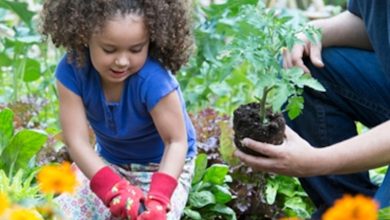Carrot Diseases: Complete Guide with Pictures
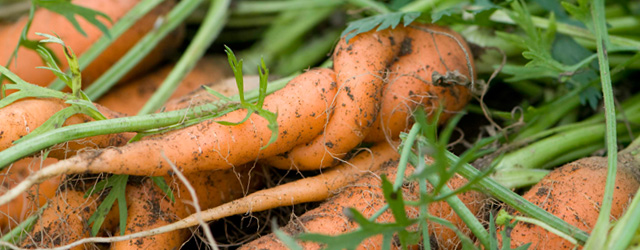
Hello to all agrohuerters! In today’s article we will see what the main carrot diseases are and how we can easily identify them. This time we will focus on diseases and not pests since, as we will see below, there is a lot of variety. In later articles I will also tell you about its main pests (mainly aphids, slugs, earthworms and nematodes).
We start with a little anecdote about carrots. In the beginning (in 3000 BC) carrots were purple and yellow inside. Later, new varieties of other colors emerged. However, the first orange-colored carrot was produced in Holland in the 16th century based on genetic crosses in order to obtain a carrot of the same color as the Dutch royal house (Orange-Nassau).
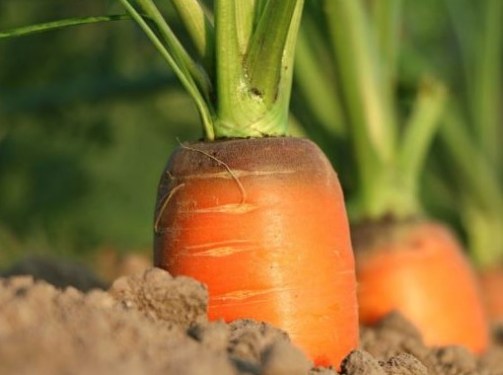
carrot diseases
Within the wide range of carrot diseases we can organize them as: those that affect the seeds, the roots (remember that the carrot is the root of the plant), the leaves or the carrots once harvested.
To make it easier for us to identify them, we will look at the main symptoms produced by each disease (wrinkled leaves, white spots, black spots, etc.).
Brown spots on carrot
On occasion we can see that our carrots have brown spots on the skin. In this case, we are talking about a fungus called Stemphylium radicinum and it occurs mainly in intensive crops.
rotten carrots
There is a type of disease caused by a fungus known as Phytophthora megasperma that appears on winter carrots left in the ground. The parasite remains in the soil for several years and develops mainly in moist soils.
Leaves with yellow spots
The presence of yellow leaves or spots may be due to the carrot fly or a virus transmitted by a species of aphid known as Cavariella aegopodii.
White cottony spots
On other occasions we can see a type of cottony spots on our carrots. In this case, the culprit is another fungus called Sclerotinia sclerotiorum.
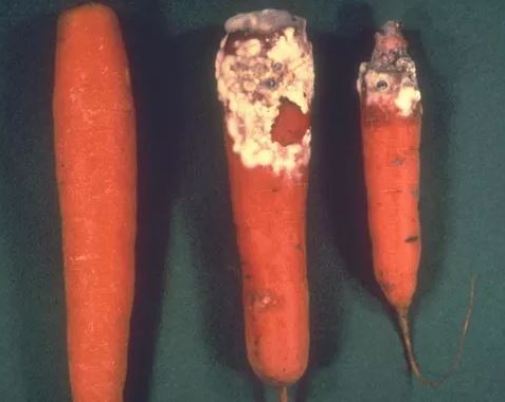
Other spots on carrot
We can also find other types of more common spots caused by fungi that we already know such as Oidium (whitish spots), Mildew (yellow and angular spots), Alternaria (small brown spots, surrounded by yellow on old leaves) or Septoria (brown spots claritas that dry the leaves).
Diseases during carrot storage
One of the main problems of agro-food products warehouses is the control of pests and diseases. We may have a good harvest, but if we do not control storage well later, we can spoil it completely.
In the case of carrots, the most common storage diseases are:
violet spots
These types of stains are characteristic in warehouses. It is a disease caused by a fungus known as Rhizoctonia violacea.It can also affect other crops such as sugar beets. As soon as we see a carrot with these symptoms, we must eliminate it to prevent it from infecting the rest.
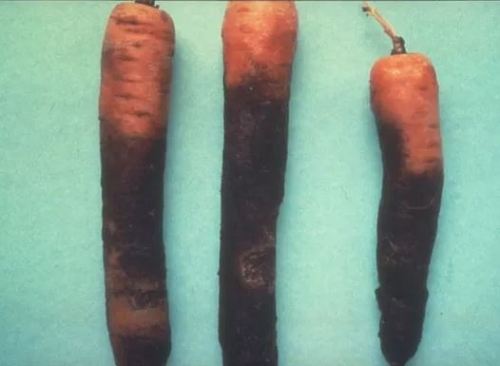
White cottony spots or white rot
During storage we can also find the fungus Sclerotinia sclerotiorum, which we have talked about previously.
Carrot Disease Prevention
For each of the diseases that we have seen previously there are specific control methods. However, there is always a set of practices and little tricks that we can use to prevent the appearance and spread of carrot diseases. You can read some of these tips below:
- Perform a rotation. If the disease is found in the soil, it will be necessary to carry out a rotation, where we will place other crops in the place where our carrots were. In this way we will weaken the pathogen and after a few years we will be able to grow carrots in the same place again.
- Avoid excess nitrogen in the soil.
- Use healthy seeds free of pathogens. This third piece of advice is very important because if we use contaminated seeds from the beginning, our plants will develop the disease more easily.
- Do not plant carrots next to a diseased crop.Diseases can be passed from one crop to another, so it is very important to carry out good surveillance.
- Disinfect the orchard or garden tools if we have treated diseased crops to prevent their spread.
Treatment against carrot diseases
As you know, when carrying out a treatment on the crops in our garden, we must try to be as respectful as possible with the environment and avoid the use of polluting chemical products. Therefore, we will try to follow the methodology of integrated pest and disease protection whenever possible. This methodology is based on keeping the population density of pests and diseases below the economic damage threshold using agricultural practices that respect the environment and natural resources. If there is no other choice, phytosanitary products that leave the least possible residue in the environment will be used.
In spite of everything, we must be aware that most plant diseases are difficult to control once they have been installed. That is why we always say that prevention is better than cure. It is also very important to pay attention to the surrounding plants since these diseases can be passed from one plant to another.
Within these principles, the measures that we can apply once we detect the disease in our plants can be the following:
- Remove the sickest plants. If we observe that any of the plants in our garden is very sick, the best thing we can do is eliminate it to prevent it from contaminating the others.
- Against a fungal attack, we will leave inorganic products such as sulfur or copper as a last resort and it will be very important to respect the safety deadlines.
- Homemade garlic and onion broth. It works well for both preventing and curing fungal and bacterial diseases. You will need 5 cloves of garlic and half a large onion. We chop it, add a liter of water and leave it to rest for 24 hours. The next day we boil it for 20 minutes and then strain it. Finally, we will apply this broth diluted in water on our affected plants.
I leave you a link where you can find how to make your own homemade fungicides step by step.
References
- Zhang J, Hu S, Xu Q, You H, Zhu F (2018). Baseline sensitivity and control efficacy of propiconazole against Sclerotinia sclerotiorum. Crop Protection,114, 208-214.
- D’Hooghe, P., Diaz, D., Brunel-Muguet, S., Davy, M., Vial, F., Dubois, J., Kauffmann, F. (2018). Spatial variation of root yield within cultivated carrot fields is strongly impacted by plant spacing. Scientia Horticulturae, 241, 29-40.
- Bohanec M, Cortet J, Griffiths B, Žnidarši? M, Debeljak M, Caul S, Krogh PH (2007). A qualitative multi-attribute model for assessing the impact of cropping systems on soil quality. Pedobiology, 51, 239–250.
- Braun, U. (1982). Morphological Studies in the Genus Oidium III. Zentralblatt für Mikrobiologie. 137(4), 314-324.
Finally, here is a link to an article where you will learn how to grow carrots step by step and another on how to grow carrots in your garden.
I hope you liked the article and that it helps you to have strong and healthy carrots. Do not hesitate to tell us all your doubts. See you in the next article!
Have a nice day

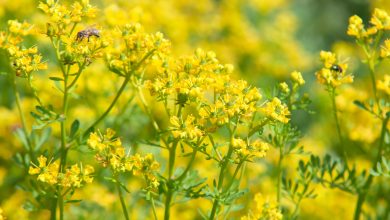
![Photo of How to Fertilize a Lemon Tree: [Components and Needs]](https://www.complete-gardening.com/wp-content/uploads/2022/08/how-to-fertilize-a-lemon-tree-components-and-needs-390x220.jpg)
![Photo of Durillo: [Cultivation, Irrigation, Care, Pests and Diseases]](https://www.complete-gardening.com/wp-content/uploads/2022/08/durillo-cultivation-irrigation-care-pests-and-diseases-390x220.jpg)
